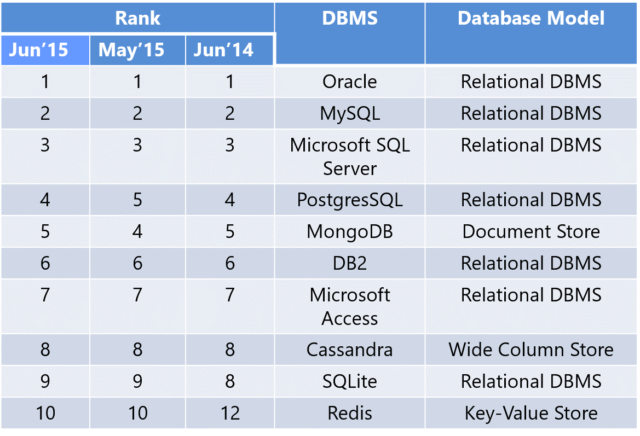DATABASE MANAGEMENT SYSTEM (DBMS) SELECTION

Database management system (DBMS) is a software that interacts with the user, other applications, and the database itself to capture and analyze data. The general-purpose of DBMS is for designing and allowing creation, querying, update, and administration of databases, in short DBMS is the tools that are used to connect the administrator and the database itself.
DBMS Selection
When an enterprise decided to use the Database model in their Business, They will need the DBMS system, but DBMS have so many varieties, and it is not a simple task for choosing the DBMS, because there are some risk that may occur when the DBMS that are selected is not compatible because it doesn’t match the company’s strategies.
In many ways, the database has become a commodity. Products differ on price, performance, ease of database administration and functionality.
4 Main Step When Choosing the Right DBMS
- Define Terms of Reference of Study
The Purpose of this step is to Describe and identify the Objectives and the Scope of the Study and the task that need to be undertaken. Because each company has different objectives, different objectives need a unique treatment/service from the database. The Scope of the task that will be performed is important to be studied as well. Both of the Objectives and the Scope of the Study will be created based on the criteria on the user requirements.
- Shortlist two or three products
After the concept of the DBMS that will be needed has been defined, the next step from choosing the DBMS is to list some products that matched the main concept that has been defined in the previous step. We also need to consider the budget that are available based on the Scope of the Task that will be performed (step1).
Also the comparison of the performance need to be described to make it easier to analyze those products. If you’re looking to purchase a fairly complicated system, you might want to consider engaging a consultant who can do an audit of your current system’s capabilities, your organization’s needs, and match you with an appropriate solution.
- Evaluate Products
The purpose of this step is to conduct a deeper analysis about those DBMS that have been listed as posibble option (step 2), these deeper analysis consist of the accesibility pf the Products, The performance of the Products itself, The Security and how far can the Products provide the security, etc.
When evaluating it’s also posible to ask the vendor to create a demo about the DBMS, so you can try and create a deeper evalution about the DBMS because the DBMS has been tried in your system as a demo.
The service of the Vendor is also important because the company will have a business relation with your company for several years if the contract has been made.
- Recommend Selection and Produce Report
Finally we will create a documentation about the findings when analyzing the right DBMS that the company need. The documentation consist of the process when providing a statement of the findings and recommendation for the particular DBMS Product. The recommendation is the opinion of the analys when selecting the DBMS.


